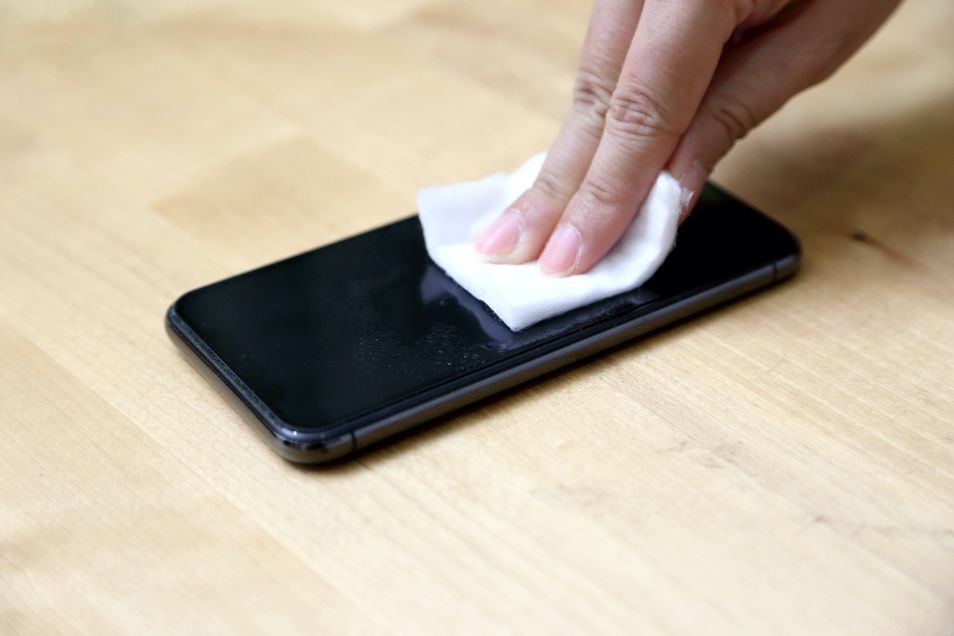How to clean your smartphone during the coronavirus pandemic
The novel coronavirus has been a crash course for many people on washing their hands — properly. But the devices we carry in our hands may also need cleaning as well. In particular, our smartphones could use some attention as often as our hands, since we check them 96 times a day, according to 2019 research from tech company Asurion.
Smartphones aren't the only smart devices we touch periodically through the day. Smartwatches, earbuds, computers and smart speakers and displays also have surfaces which may need some cleaning too.
Here then are a few ways to clean many of these surfaces, particularly from viruses, including COVID-19.
Read More:
- Namecheap block domain registration of 'coronavirus'
- Can wearable tech prevent coronavirus?
- Apple releases COVID-19 screening tool and web site
Waterproof cases
Washing your smartphone? In some situations, smartphones can handle a dunking. But a 20-second spin under the water faucet is likely not a great idea.
A waterproof case may make a difference, however, and Catalyst makes cases that can handle an appropriate level of cleaning recommend by the Centers for Disease Control, (CDC) for the iPhone. Catalyst has even made a video that shows exactly how well its cases hold up — suggesting people wash their phones every time they wash their hands, as long as one of their waterproof cases are on there.
The company also makes these cases for the Apple Watch, iPad and AirPods.
Beasyjoy also claims its waterproof cases for the iPhone 7 and iPhone X can be used underwater, fully submerged, for up to two hours. The company also says the phone can be washed as well.
Catalyst - Case for iPhone 11 Case with Clear Back, Heavy Duty 10ft Drop Proof, Truss Cushioning System, Rotating Mute Switch Toggle, Compatible with Wireless Charging, Lanyard Included - Black
Unplug and clean
AT&T has suggested that people can clean their tech devices — but only after they've been unplugged. Key here is to use a 70 percent isopropyl alcohol wipe or liquid then sprayed on to a lint-free cloth. You want to make sure your device, whether it's a smartphone, smartwatch or smart display is also powered down.
Sprint is advising customers that smartphones are what the CDC calls "high-touch" surfaces, which means they should be cleaned with a household cleaning spray or wipe.
Apple specifically suggest using a 70 percent isopropyl alcohol wipe or a Clorox Disinfecting Wipes, and with them wipe off hard surfaces of an Apple product that are not porous, including a display and keyboard — but not on fabric or leather. The company also says not to use bleach.
Google makes the same suggestions for its Pixel smartphone on how to clean both the screen and the surrounding surfaces on the device.
At Lenovo, the company is suggesting that after leaving the cleaning solvent on a surface for "the prescribed contact time," you then wipe the surface down with a dry, lint-free, soft cloth.
Catalyst iPad 9.7" Waterproof Case Shockproof Drop Proof, Protective Case [Compatible with iPad 6th Generation] Premium Quality Cover High Touch Sensitivity, Multi Position Stand, Black
Hydrogen peroxide
While the U.S. Environmental Protection Agency (EPA) includes hydrogen peroxide on its list of disinfectants to use against the novel coronavirus, it is what you should use only as a last resort. The problem? Kapersky, a cybersecurity firm, notes that hydrogen peroxide along with ethanol can ruin the oleophobic coating on a device, which is what keeps the surface smooth and able to repel fingerprints.
Whatever method you decide to use to keep your devices clean — it's likely also a good idea to not lend them to anyone else right now. Then, try and follow the manufacturer's suggestion as much as possible.
